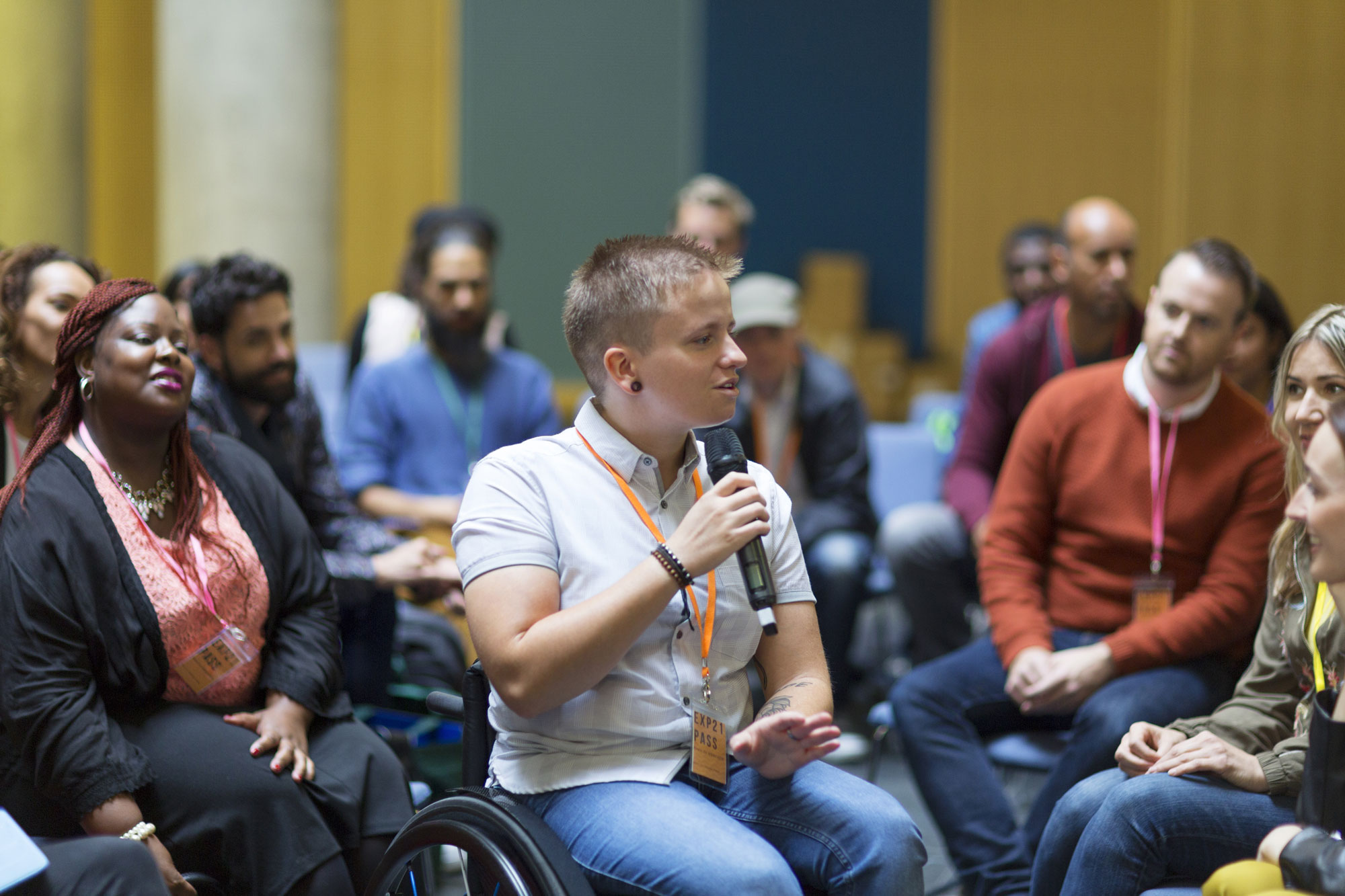
We wrote this report for you,
so you could have greater influence shaping the future.

We wrote this report for you,
so you could have greater influence shaping the future.
First, we invite you to read the report. Before we ask you to share it or take other actions, we want you to determine for yourself that the report contains useful information. Thank you for taking this important first step with us.
To our knowledge, this is the first time that a project like this report – telling the nonprofit story from the nonprofit perspective with data and context – has been attempted on a nationwide basis. We’re sure there’s much we can learn. So, we further invite you to share your thoughts and ideas, whether positive or critiques, using our contact form. Either way, we thank you for your honest feedback.
Now, if you found the report contains useful information, we ask you to use your power in the following ways to help make the future better.
We believe that if more people connected to nonprofits recognized the vital role they play in a much larger movement of making the future better, then individual nonprofits and the broader nonprofit community will have more power in making that better future possible.
Please forward the report to at least one other person you know who is connected to nonprofits as an employee, volunteer, or donor – and ask them to forward it to at least one other person as well. Of course, you also can share the report more broadly through social media, including:
Twitter:
Facebook:
Feel free to utilize the images from the Downloadable Charts & Figures page in your tweets.
Share the report with your board colleagues. Ask the board chair or incoming chair to lead a fun discussion among board members about how nonprofits have influenced their lives over the years (see page 8 of the report as a starting point). Consider some of the common challenges that nonprofits face (see pages 23-30) and what your organization can do. Discuss how your nonprofit can join and tap into the power of nonprofit networks (page 32). Review the expectation that board members will advocate on behalf of the nonprofit’s mission (pages 34-35).
We hope you will feel inspired to share this report with your staff colleagues so they can see how they are part of something even larger than your nonprofit. You and your nonprofit are not alone. Explore what your organization can be doing to protect the public’s trust. (See page 32 of the report.) Lead a dialogue at an upcoming staff meeting about how each of you can embrace and promote the values of diversity, equity, and inclusion within your own organization (page 33). Discuss the easy tools available to advocate and advance your organization’s mission (pages 36-37).
Volunteers are the bedrock of so many organizations. Share the report with your friends who volunteer. Encourage them to consider how they add value beyond the specific nonprofits where they volunteer, given that nonprofits are the place where many people learn (and teach) the basic skills of strengthening communities and civic engagement (at pages 9-11).
Without your financial support, many nonprofits would be forced to reduce delivering on their missions, or maybe even stop completely. As you read this report, please take pride in the role you play in fueling such vital work. Learn more about the worrisome trends emerging in charitable giving (see the report at page 29) and encourage your friends to join you in supporting local nonprofits in your community (also page 29). Leverage your gift by encouraging nonprofits to advance their missions through advocacy (pages 34-37). Help explain to others that looking at a nonprofit’s “overhead costs” is a misleading metric (as shown at page 22 of the report).
Nonprofits often work on the front lines of pressing social challenges. That position of being so close to the problems means that nonprofits are also closest to possible solutions. Nonprofits should not hoard these insights; rather, they should share their views of the actual problems and practical solutions so policymakers can make better-informed decisions.
It sometimes comes as a surprise to people in the nonprofit sector that we have the constitutional right, statutory authority, and moral obligation to advocate and even lobby on behalf of our organizations and the individuals and communities we serve. In fact, charitable nonprofits can—and absolutely should—speak out on matters of public policy that affect their missions.
All 501(c)(3) organizations need a reliable and supportive public policy environment in which to pursue their missions. Yet those missions are vulnerable to actions by policymakers who, whether intentionally or inadvertently, can take away needed resources, impose unnecessary burdens, interfere with decision-making, erect harmful barriers, and otherwise change laws in ways that disrupt the work of charitable, religious, and philanthropic organizations.
It’s important to recognize significant threats can occur not just at the federal level, but also at the state and local levels. As this chart reveals, the odds of policy changes being made are much greater at the state than the federal level.
If your state proposed to limit or eliminate charitable giving incentives, eliminate tax exemptions for nonprofits, levy new taxes or fees on nonprofits, impose unwieldy regulatory burdens on nonprofits, substitute its opinions for your board’s informed decision-making or proposed other harmful changes, would the nonprofits you care about be prepared?
Nonprofits face challenges larger and more complex than any one individual or organization can solve alone. We all can accomplish so much more by working together than struggling alone.
There is power in numbers. In a game of tug of war, it’s the combined strength of many people that prevails. The same is true with nonprofits. One person or even one organization is not enough to influence public opinion or policymakers.
But what if that lone person or organization joins with another, and then another, and more?

Cartoon credit: Tim Cordell, www.cartoonstock.com
The nonprofit community will never be able to compete with the billions of dollars spent nationally on lobbying every year by corporations and governments, let alone the billions more spent on political campaign contributions.
Instead, nonprofits’ strength is in our numbers. Nonprofits exist in every community, are closest to the problems, and understand the issues. Since nonprofits see the solutions to the community’s challenges firsthand, nonprofits should be sharing their insights with policymakers to help them make informed decisions. Policymakers need and deserve to hear the voices of their constituents who often find it easier to work with others through nonprofits.
Advocacy is much broader than legislative lobbying. Advocacy also includes activities such as administrative advocacy (rulemaking and enforcement), research and analysis (such as documenting the reach and effects of an issue), media advocacy (educating the public), and judicial advocacy (litigation and filing amicus curiae briefs), to name a few. Advocacy is simply promoting a nonprofit’s mission through engagement with others.
Your voice—and your nonprofit’s mission—is more important than ever. You can amplify it by joining the state association of nonprofits in your state. Join and collaborate to improve the public’s appreciation of the work of all nonprofits, strengthen your internal operations, and create a favorable public policy environment at the local, state, and federal levels for advancing your nonprofit’s mission.
As everyone connected to a nonprofit knows, one of the thrills – and challenges – of nonprofits is that we all operate in a dynamic, ever-changing space. In addition to reading Nonprofit Impact Matters, here are more ways to advance your mission through knowledge:
Nonprofits need revenue to keep operating and advancing their mission—and we’re no exception. This report was a labor of love for us: we wanted to share what we were learning about our amazing sector with the millions of others in the nonprofit community.
If the information you found on this site was valuable to you, please consider making a donation to support this work. Just as with nonprofit networks and advocacy, there’s power in numbers. If many of our readers make a modest donation, it will add up to a lot of impact–and we can keep working with and for charitable nonprofits to improve the future for individuals and communities.